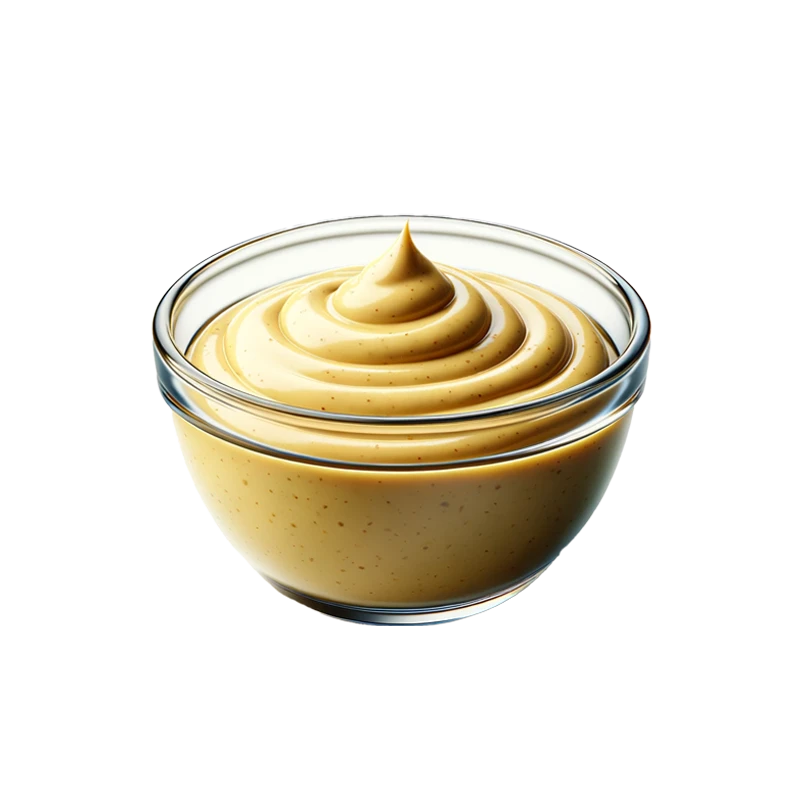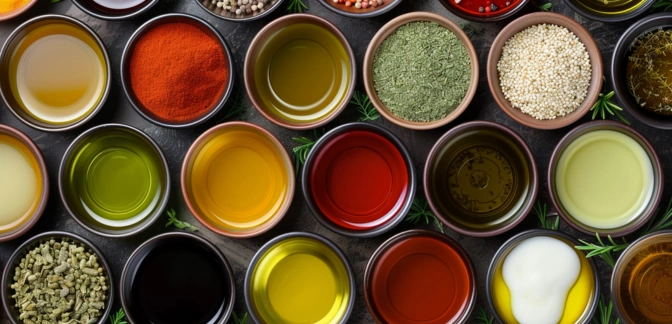Mustard — Nutrients, Health Benefits, And Shopping Tips

Written by Listonic Team
Last update on September 4, 2024
Nutrition facts
Nutrition facts
Amount per 100 g
Calories
🔥 66 kcal
| Nutrition per: 100 g | Value | % Daily Value* |
|---|---|---|
| Carbs | 8 g | 2.91% |
| Fiber | 3 g | 10.71% |
| Sugars | 4 g | 8% |
| Glycemic Index | 55 | - |
| Protein | 4 g | 8% |
| Sodium | 1180 mg | 51.3% |
| Total Fat | 3 g | 3.85% |
*The % of Daily Value (DV) tells you how much a nutrient in a serving of food contributes to a daily diet. 2,000 calories a day is used for general nutrition advice.
55
🟢 Low Glycemic Index
3 g
🥕 Low Fat Content
Did you know?
Health benefits
- Low in calories, making it a healthier condiment option for adding flavor to foods.
- Contains antioxidants from mustard seeds, which help protect the body from free radicals and reduce inflammation.
- Supports digestive health by stimulating the production of digestive enzymes and bile.
- Rich in minerals such as selenium and magnesium, which support overall health and well-being.
Health risks
- High sodium content in many commercial mustards, which can contribute to hypertension and increased cardiovascular risks when consumed frequently.
- Potential for allergic reactions in some individuals, particularly those allergic to mustard seeds, causing symptoms like itching, swelling, or difficulty breathing.
- Potential for digestive irritation particularly in individuals with sensitive stomachs or those prone to acid reflux, as mustard can be quite acidic and spicy.
- Potential for artificial additives such as preservatives or colorings in some commercial mustards, which may cause adverse reactions in sensitive individuals.
How to choose mustard
Mustard should have a vibrant yellow or deep brown color, depending on its type, with a smooth, spreadable texture. The flavor should be sharp and tangy, a characteristic feature that enhances rather than overwhelms.
Steer clear of mustard that has separated or developed a watery layer, as this can indicate it has been stored too long. Good mustard should offer a robust taste, perfect for adding depth to sandwiches, dressings, and marinades.

How to store mustard
Unopened mustard should be kept in a cool, dry place like a pantry. Once opened, refrigerate to maintain its flavor and quality. Properly stored, mustard can last up to a year in the refrigerator.
Leaving mustard at room temperature after opening can cause it to lose its potency and spoil. Avoid storing it near heat sources or in direct sunlight, as this can degrade its quality. Always ensure the lid is tightly sealed to keep it fresh.
✅ Extra Tip
How long does it last?
Mustard can last for 1-2 years unopened when stored in a cool, dark place. Once opened, it should be refrigerated and used within 6-12 months.
What to do with leftovers?
Leftover mustard can be used in a variety of savory dishes. Use it as a base for salad dressings or vinaigrettes, where its tangy flavor adds depth to greens and vegetables. Mustard is also great when mixed into marinades for meats, where it helps to tenderize and flavor the meat.
Use mustard as a spread on sandwiches, wraps, or burgers for a tangy kick, or mix it into a cheese sauce for added flavor. If you have a lot of mustard, consider making a batch of deviled eggs by mixing mustard with egg yolks, mayonnaise, and spices, then piping into the egg whites. Mustard can also be stirred into mashed potatoes or added to casseroles for a tangy twist. For a quick snack, mix mustard with honey for a sweet and tangy dipping sauce, or use it as a glaze for roasted vegetables or meats.
👨⚕️️ Medical disclaimer
Discover products from other categories
Listonic Team
Fact-checked
Our editorial team checked this article to make sure it was accurate at the time of publishing it.
Get the top-rated shopping list app on your phone!







